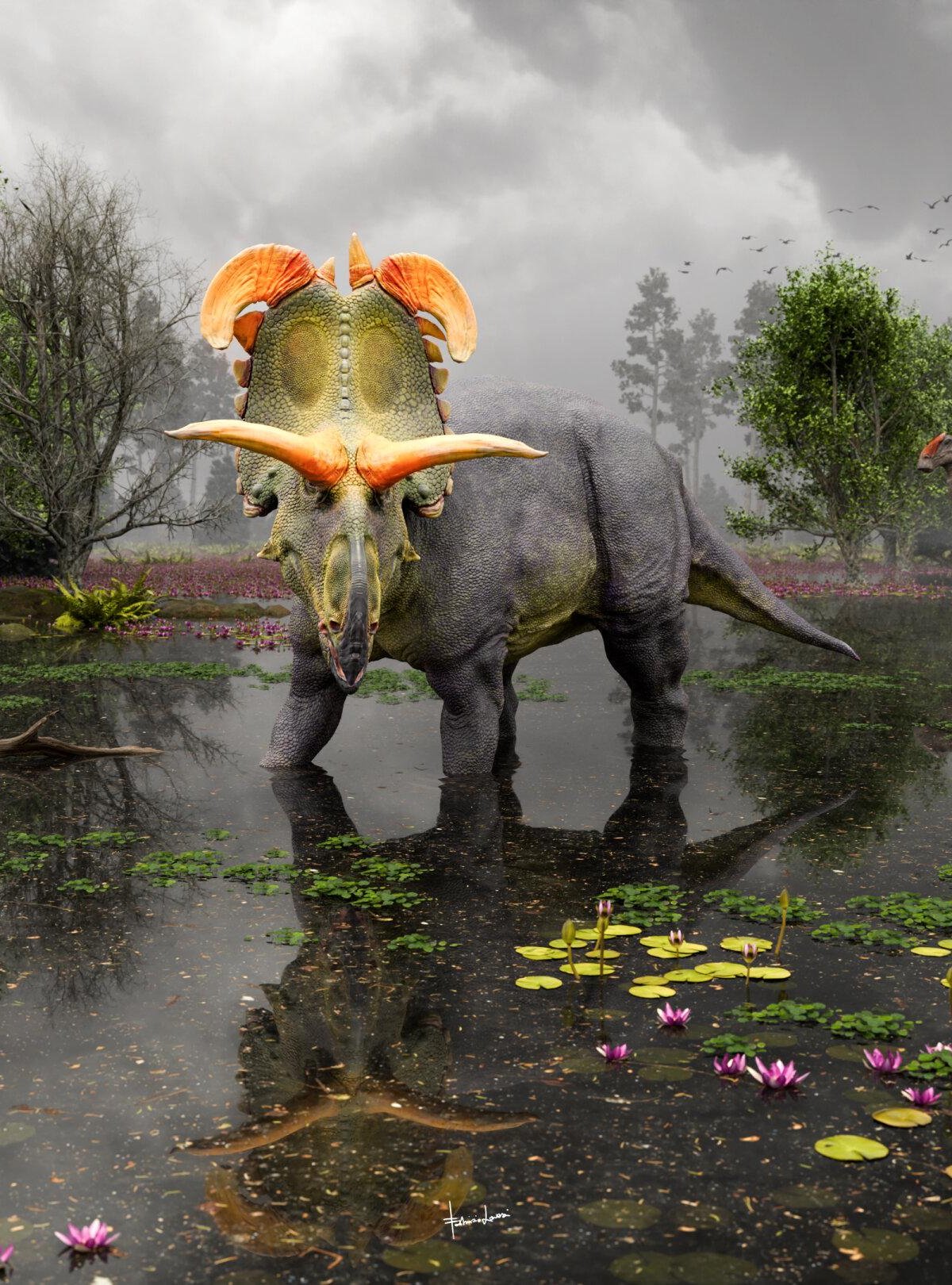A new and different species of herbivorous dinosaur was recently announced in the journal Paleology and Evolutionary Science: HE Lokiceratops rangiformis. The dinosaur, named after the mythological god (and comic book character) Loki, was unearthed in the wastelands (arid lands) of Montana in the north of the USA.
The dinosaur, currently on display at the Utah Museum of Natural History, can be considered giant. In addition to weighing about 5 tons and being 6.7 meters long, the animal also had a type of helmet with two blade-shaped horns, similar to what we see on the lovable villain in the Avengers movie.
Identified from the remains of a skull Loki was rebuilt from dinner plate-sized pieces and even smaller.and it was unlike any dinosaur known before. But his horns placed him in a class group. Keratopsis (horned face) are called centrosaurines that lived on Earth during the Cretaceous period, 78 million years ago.
How did Lokiceratops live?
In their time, Lokiceratops lived in the swamps and floodplains of the east coast of Laramidia, an island continent formed by the inundation of central North America called the Western Interior Seaway. This sea divided the present American continent into two large island regions: Laramídea in the west and Appalachia in the east.
Laramidea’s scorching climate eased following the formation of mountains and dramatic changes in sea level. In this more pleasant landscape, centrosaurines, with their impressive ornaments and horns, split into several families and survived until the end of the dinosaur age, called the Cretaceous-Paleogene Mass Extinction, about 66 million years ago.
Lokiceratops is distinguished from its horned cousins by some unique features, such as “no horns on the snout, huge, curved, blade-like horns behind the frill (bony collar).” – largest ever found in a horned dinosaur – and there is a distinct, asymmetrical tip in the middle of the frill,” says the study.
What does Lokiceratops reveal about other dinosaurs?
Skull Lokiceratops The discovery was excavated in the same rock layer where four other dinosaur species were discovered, which is a record, according to study co-author Joseph Sertich of Colorado State University. “Five individuals living together is an unprecedented diversity,” says the paleontologist.
Is this, Animals were geographically limited during the Cretaceous periodIn contrast to the wide diversity of large wild mammals such as elk that live in western North America today. What Loki tells us is that these species evolved quickly and in a limited habitat, as is common in birds.
According to the paper’s first author, Mark Loewen of the University of Utah, Lokiceratops showed that “we are only scratching the surface” when it comes to diversity among horned dinosaurs.
Stay informed about the latest scientific discoveries at TecMundo. If you wish, take the opportunity to discover how scientists named dinosaurs.
Source: Tec Mundo
I’m Blaine Morgan, an experienced journalist and writer with over 8 years of experience in the tech industry. My expertise lies in writing about technology news and trends, covering everything from cutting-edge gadgets to emerging software developments. I’ve written for several leading publications including Gadget Onus where I am an author.













